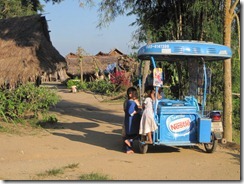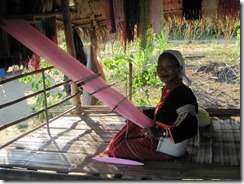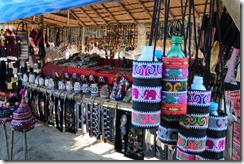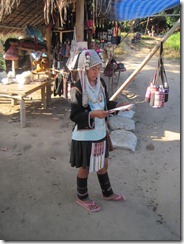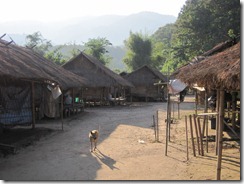Elements of a Book Phenomenon (Part One)
I recently read Mockingjay, the final book in The Hunger Games trilogy by Suzanne Collins. The trilogy is the latest book sensation to follow on the heels of two other blockbuster series, The Twilight Saga by Stephenie Meyer and the Harry Potter series by J.K. Rowling. I read all three series in order to understand why they became runaway hits—and for fun, of course. As anyone not named Rip Van Winkle knows, Harry Potter became a cultural phenomenon with books, movies, and a litany of tie-ins. Twilight is well on its way to doing the same, although its popularity may wind down after part two of the movie Breaking Dawn hits theaters in November 2012.
The newest book sensation to take hold in popular culture seems to be The Hunger Games. With the first movie adaptation set to release in March 2012, the trilogy may catch fire like its protagonist, Katniss Everdeen, did in the Hunger Games. Some believe that The Millennium Trilogy by Stieg Larsson featuring Lisbeth Salander, the Girl with the Dragon Tattoo, was the next mega-series to follow Twilight. It has a large international following and not one, but two, movie adaptations. I would argue, however, that although it has elements of a book phenomenon, The Millennium Trilogy has not quite crossed over to literary immortality (except in Sweden, perhaps). That the movie version of The Girl with the Dragon Tattoo starring Daniel Craig and Rooney Mara was a disappointment at the box office supports my assumption.
Why do some book series, like The Millennium Trilogy, become bestsellers, while a few, like The Twilight Saga, become phenomena? What sets Harry Potter, a book series that Wikipedia estimated earned more than $450 million and counting (excluding the films), apart from R.L. Stine’s Goosebumps novels that have grossed more than $350 million to date? Or The Hunger Games from another series some have compared to it, Gone by Michael Grant? Some books become bestsellers, even blockbusters, but never cross the nebulous line to cultural sensation. Movie adaptations play a role in whether a book series becomes a phenomenon, although many bestsellers are made into film but do not redefine popular culture. Having a large publishing company willing to sell licensing rights to hype a series helps, but it does not explain how some books catch fire while others fizzle. For those who are skeptical that a series like Twilight should be considered a phenomenon, keep in mind that a book does not have to be critically acclaimed to be a phenomenon; it has to influence popular culture. Based on this standard, Twilight certainly has.
If you are an author planning to write the Next Great Novel, how do you write a series that will become a book phenomenon? I have not written one and cannot draw from my own experience to tell you how to do it, but I have read and studied many series that became book sensations. Here’s an obvious trajectory for bestselling book series. The first novel must become a bestseller with each successive novel building a larger audience. Once the books become a commercial success, movie adaptations attract a wider following and reinforce the books’ messages. What transforms these series into phenomena, however, is the final phase in their evolution—they build a reciprocal relationship with popular culture, become synonymous with it, and redefine it. Consider the words “Hogwarts,” “muggles,” “Voltari,” and “imprint.” Each has made its way from the pages of Harry Potter or Twilight into the popular lexicon. A book series becomes a phenomenon when other books and media copy its formula, echoing the same themes as the original. Most copycats, however, never replicate the success of the original. The proliferation of paranormal romances, from vampires to fairy tales, is a result of Twilight’s impact on culture. None are as successful.
In addition to the series I mentioned above, others as diverse as The Godfather, Gone With The Wind, and Lord of the Rings have become book phenomena. Each draws heavily on cultural themes that capture readers’ imaginations and renders images into a strong story that, in turn, shapes popular culture. The Godfather by Mario Puzo drew from images of mafia families in New York and Italy and distilled them into a masterpiece that redefined in our minds what it meant to be a mobster. Gone With The Wind captured the imaginations of Depression-era audiences that recalled the American Civil War in the years before World War II. Many saw the idyllic world of southern plantations as a way to escape their own; the triumphs and tragedies of the protagonists, Scarlett and Rhett, mirrored readers own lives. Loosely based on geopolitics during the era of fascism and World War II, The Hobbit and the Lord of the Rings defined the fantasy genre for generations to come. Virtually every fantasy written since then has at least some elements of Tolkien’s Middle Earth.
Now, it’s time for The Hunger Games. This intriguing series touches on contemporary themes of modern warfare, the media, and reality television, and combines them with society’s infatuation with post-apocalyptic worlds. Few aspects of Collins’ books are original, but the way in which she turns popular images and ideas into a compelling story reverberates in a way that may transform it into the next book phenomenon. Whether The Hunger Games crosses over to literary immortality depends on how its movie adaptation performs at the box office. If ticket sales are disappointing, as is highly unlikely, it could go the way of Christopher Paolini’s Inheritance Cycle, a book series whose upward trajectory was cut short by a poorly made film.
I have identified some key elements a book series should have in order to become a book phenomenon. Stay tuned for part two, where I discuss these elements in detail.
This is part one of a two-part series examining what transforms a book series into a phenomenon. Click here for part two of the series.
M.G. Edwards is a writer of books and stories in the mystery, thriller and science fiction-fantasy genres. He also writes travel adventures. He recently published a collection of short stories called Real Dreams: Thirty Years of Short Stories available as an ebook and in print on Amazon.com. His upcoming book, Kilimanjaro: One Man’s Quest to Go Over the Hill, will be released on March 31, 2012. He lives in Bangkok, Thailand with his wife Jing and son Alex.
For more books or stories by M.G. Edwards, visit his web site at www.mgedwards.com or his blog, World Adventurers. Contact him at me@mgedwards.com, on Facebook, on Google+, or @m_g_edwards on Twitter.
© 2012 Brilliance Press. All rights reserved. No part of this work may be reproduced or transmitted without the written consent of the author.





